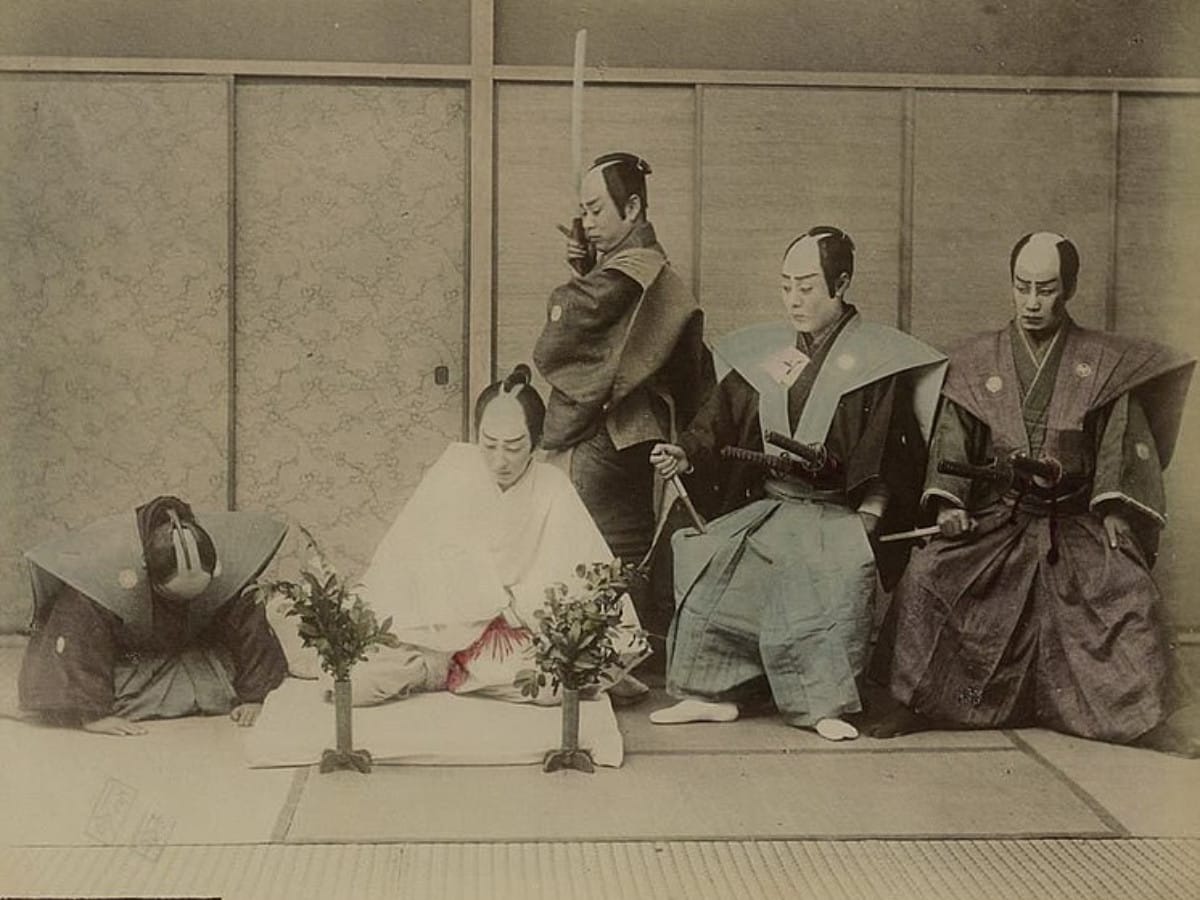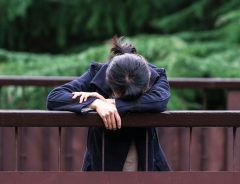
Source: The Rev. R. B. Peery. Image Scanned by User:DopefishJustin. / Public domain
The Complicated Concept of Suicide in Japan
Related Article
-

Need To Apologize? Send These Seppuku-Themed Desserts And Win Forgiveness
-

This Harakiri Shirt Spills Your Guts, Perfect For Apologizing To Your Significant Other
-

20 sumo wrestlers save woman who plunged from a bridge in Tokyo
-

The Rise Of The Decline Of Dating In Japan
-

Pokemon Go Players Are Revitalizing An Infamous Suicide Spot In Japan
-

Flip Book Artist Explores Dangers of Overwork Culture in Shady Japanese Companies with Heartbreaking Video


As many are aware, Japan has a notably high suicide rate. While it is far from the world's highest-risk nation in the world, or even in the developed world—either Russia or South Korea depending upon the source—it is unusually high for a culture that stresses peace and happiness.
Understandably, the propensity for residents to take their own lives is a major social issue. Every few years or so, one such incident makes headlines and reinserts the issue into the national conversation. Most recently, Terrace House cast member Hana Kimura sadly took her own life. The reality-show star and professional wrestler had been the victim of widespread online abuse following an incident which aired on the reality show. She released a haunting suicide note on Twitter, and was found deceased shortly thereafter. She was 22 years old.
In the wake of the incident, Fuji Television and Netflix announced they would discontinue distribution of the show, and the Terrace House Twitter page released a note offering condolences to Kimura's family. Following the incident, and after a string of online harassment surrounding COVID-19, the Japanese government has begun discussing penalties against netizens who engage in cyberbullying.
Japan's History of Seppuku
So, are these issues unique to Japan? I would certainly suggest they are not. However, the overall cultural attitude towards suicide, at least historically, stands in stark contrast to that of Judeo-Christian societies.
Historically, Japan has been described as having a tolerant attitude toward suicide. As an act which is, in the words of the noted anthropologist Emiko Ohnuki-Tierney, "elevated to the level of an esthetic experience," it has sometimes been considered a morally responsible decision.
This elevation of suicide likely has origins in the military’s use of seppuku. Also known as harakiri, seppuku is the act of ritual suicide formerly performed mostly by samurai. In the act, an individual uses a short knife or other blade to stab themselves in the stomach and slice horizontally. Disemboweling as such, if deep enough, the move severs the descending aorta and quickly leads to death by bleeding out.
As the ritual evolved and standardized over time, it became a form of capital punishment ordered against samurai or laypeople who had disgraced themselves. It also incorporated a kaishakunin, an assistant who would decapitate the accused after he or she stabbed themselves in the abdomen.
The Nation’s Mental Health on the Brink
Despite supposedly esteemed origins, public perception began to change throughout the 1990s. The decade, sometimes referred to as “the lost decade,” saw an end to the excesses of the Japanese miracle as the economy effectively ground to a halt. Job losses were common and associated with acute shame. Like in other economic downturns, suicide rates throughout the period spiked. More than 30,000 cases occurred annually, forcing the government to tackle the issue during the downturn.
However, public initiatives and political speeches seemingly had little effect. While many began to see suicide as indicative of social decline, the number of incidences remained elevated throughout the 2000s and 2010s. Particularly hard-hit were overworked or out-of-work business people and the nation's elderly.
Youth and Internet Suicide Pacts
Unfortunately, the events surrounding Hana Kimura speak to an underlying trend. According to a report by CNN, suicide rates among young people in Japan are at a recent high. Between 2016 and 2017, more young people killed themselves than any period since 1986.
It seems their issues are likely similar to Kimura's. Many victims reportedly experienced bullying, as well as family issues and stress. Corroborating this finding is a large spike in suicide rates occurring around the start of the new school year.
One student anti-bullying advocate who formerly considered suicide told CNN that "the long break from school enables you to stay home, so it's heaven for those who are bullied. When summer ends, you have to go back. And once you start worrying about getting bullied, committing suicide might be possible."
Several who feel there is no way out form suicide pacts online. As the internet developed throughout the 2000s, Japan witnessed a rise in the incidence of group suicides. Mafumi Usui, a psychology professor at Niigata Seiryo University, commented on the issue: “Depressed young people and the Internet—it’s a very dangerous mix. Many young people try to kill themselves, but can’t carry through. But when a group of strangers meet on an Internet suicide site, and someone suggests a specific way to die ... that’s the dangerous dynamic behind [group suicides].”
Others have underlined how such despondent group dynamics can feed individuals’ darker impulses. Individuals may not be fully able to make the decision by themselves, but group momentum might be enough to push individuals into committing the misguided act as an attempt to find release for their mental suffering.
While these would be worrying trends in any society, hopefully increased awareness surrounding the harmful effects of bullying and economic downturns may provide relief. After all, the Japanese government is well aware of the problem and has pledged to drop the rate of suicide in the near future. Hopefully, these efforts are successful.
Suicide prevention hotlines
Help is always available.
Please click here for a list of the closest hotlines where you live.